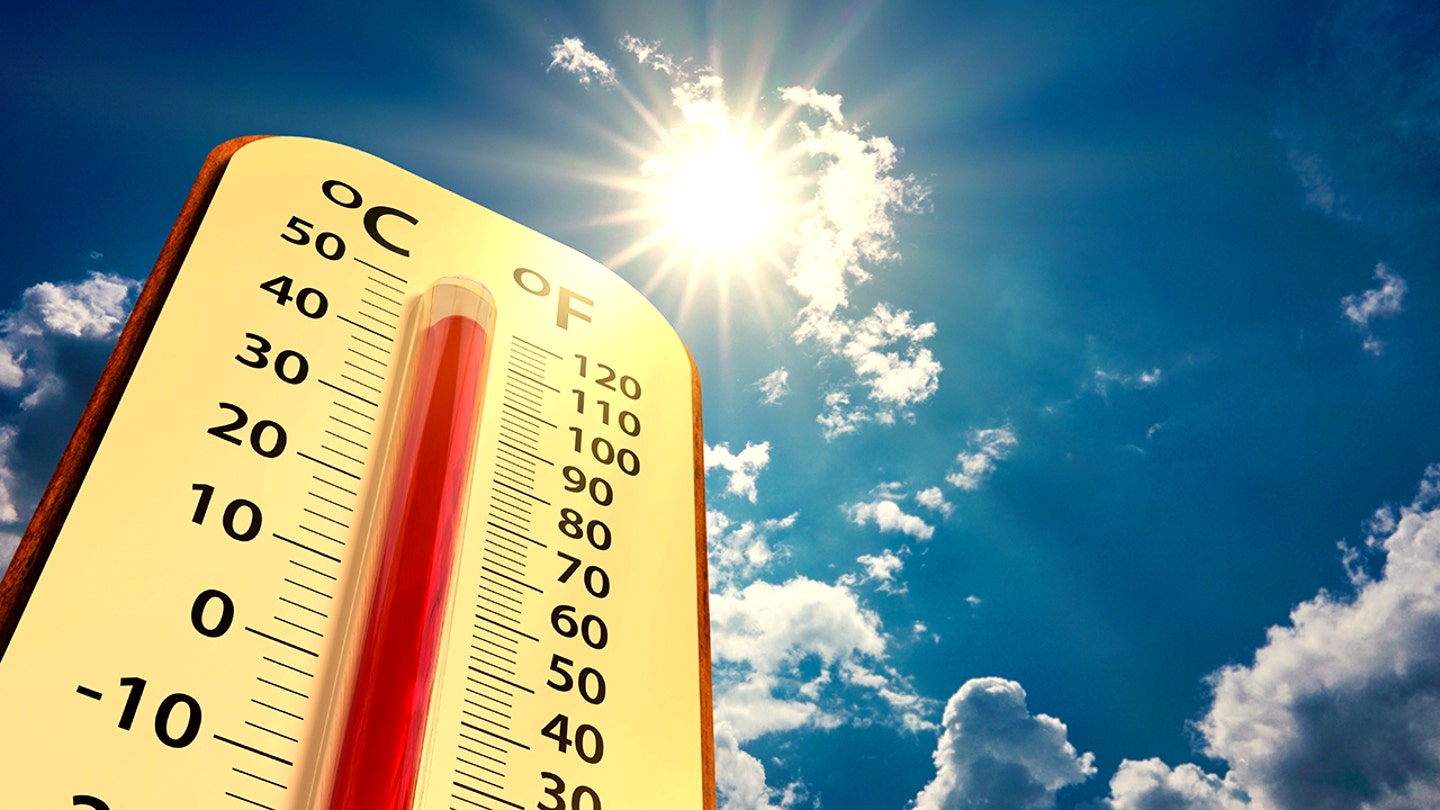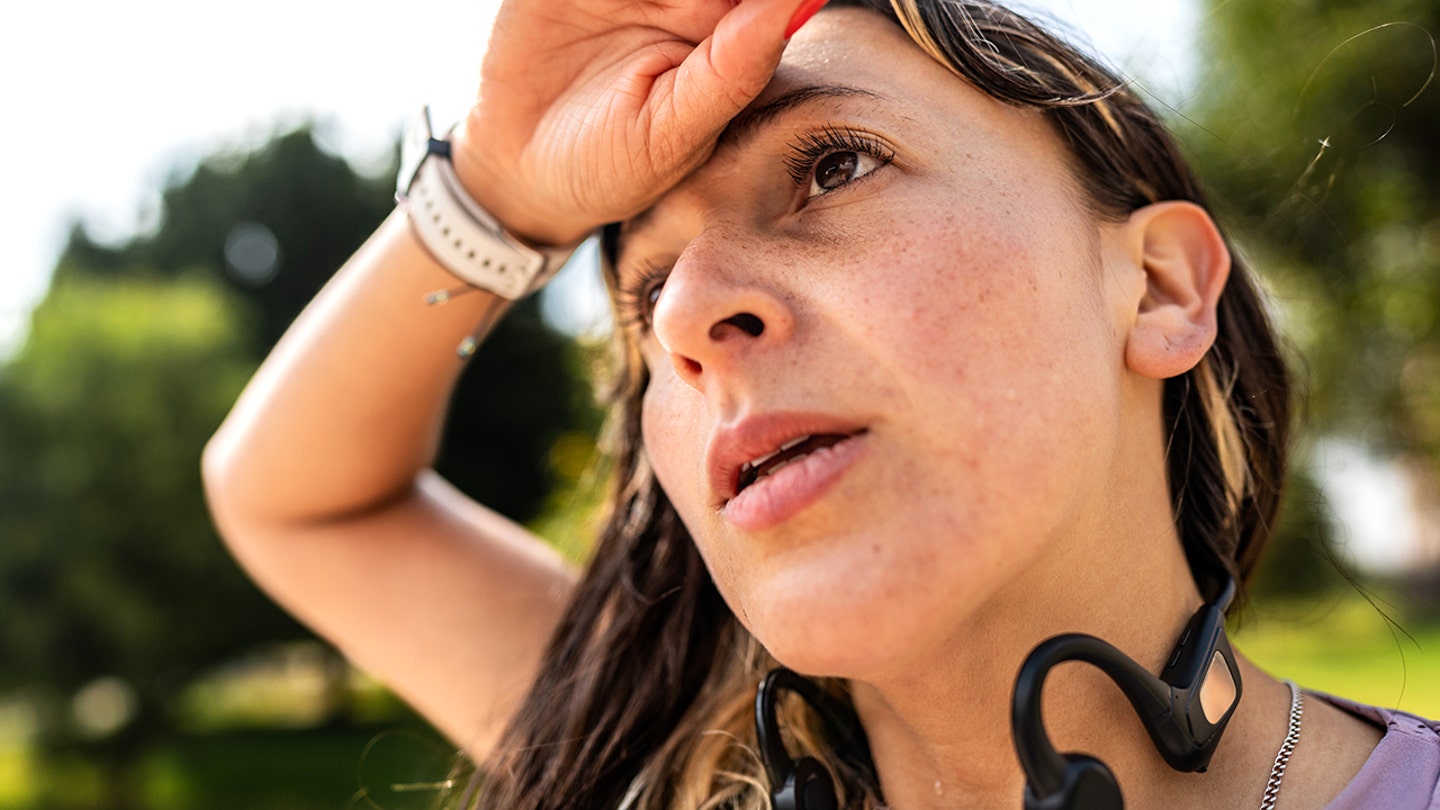NEWYou now have the option to listen to news articles!
Recently, two high-school football players — Joshua Henderson, 16, from Tennessee, and Mikah King, 15, from Georgia — tragically collapsed and passed away after practicing in hot weather.
In 2017, a similar heartbreaking incident occurred when Zach Martin, 16, lost his life due to heatstroke during summer football practice in Florida.
After collapsing, he was rushed to the hospital with a body temperature of 107 degrees Fahrenheit.
‘I’M A CARDIOLOGIST – HERE’S HOW THE SUMMER HEAT COULD DAMAGE YOUR HEART’
Zach’s mother, Laurie Martin-Giordano, who is the president of the Zach Martin Foundation, appeared on Fox & Friends to discuss ways to prevent such tragedies for other athletes.
Martin-Giordano stressed the importance of “advocating for yourself” as the first step.
Recently, two high-school football players collapsed and died after practicing in the heat. (iStock)
“You need to ensure that you are staying hydrated, eating well, and getting plenty of rest, because these are things that your coach or teachers may not be fully aware of,” she said.
What is heatstroke?
Heatstroke, as defined by Mayo Clinic, is “a condition that occurs when the body overheats.”
It can happen after exposure to high temperatures or prolonged physical activity during extreme heat conditions.
Recognizing the warning signs and taking precautions is crucial, according to experts.
HIKER DIES ON ICONIC ARIZONA PARK TRAIL DURING EXTREME SUMMER HEAT
“There are several stages of heat-related injuries, with heatstroke being the most severe,” states Mayo Clinic.
Symptoms of heatstroke include a high body temperature (104 degrees Fahrenheit or higher), changes in mental state or behavior, altered sweating patterns, and flushed skin, as per the aforementioned source.
Other signs may include nausea, vomiting, rapid breathing, elevated heart rate, and headaches.

The first step when someone experiences heatstroke symptoms is not to call an ambulance, but to do anything possible to lower their core body temperature, experts say. (iStock)
Hydration and rest are the primary defenses recommended by experts.
“If you feel faint or weak, STOP all activity and find a cool place,” advises the Centers for Disease Control and Prevention on its website.
The initial action when someone displays heatstroke symptoms is to focus on lowering their core body temperature, as emphasized by Martin-Giordano.

“If you feel faint or weak, STOP all activity and get to a cool place,” the CDC states on its website. (iStock)
“It’s crucial to bring it below [104 degrees Fahrenheit],” she explained. “104 is significant because that’s when the body loses its ability to regulate temperature.”
“Start the cooling process immediately before transporting them to the hospital … During this time, their core temperature will continue to rise, causing significant harm to the body.”
“In cases like those we’ve witnessed recently and with my son, the damage is often irreversible. The internal damage is just too severe,” she added.
Once the body starts to cool down, seeking medical assistance, which may include calling 911 for an ambulance, is essential.

Once the body has begun cooling down, it is important to seek aid, which may include calling 911 for an ambulance. (iStock)
Tips for safely exercising in the heat
If you’re planning to work out in hot weather, Mayo Clinic suggests the following strategies to stay cool and safe.
For more Health articles, visit www.foxnews.com/health
- Avoid outdoor activities, especially during the hottest part of the day.
- Apply sunscreen regularly as directed.
- Schedule workouts for cooler parts of the day.
- Begin activities slowly and gradually increase intensity.
- Stay well-hydrated and don’t wait until you’re thirsty to drink water. Muscle cramps could be an early sign of heat-related issues.
- Monitor your condition and have someone else do the same.
- Wear loose, light-colored, lightweight clothing.
Khloe Quill is a lifestyle production assistant with Fox News Digital. She and the lifestyle team cover a range of story topics including food and drink, travel, and health.
In a recent study conducted by researchers at a major university, it was found that regular exercise can have a significant impact on mental health. The study, which was published in a prestigious medical journal, analyzed the effects of exercise on a group of participants over a period of six months.
The results showed that those who engaged in regular physical activity experienced a decrease in symptoms of depression and anxiety. In addition, the participants reported higher levels of overall well-being and improved cognitive function.
One of the lead researchers, Dr. Smith, stated that the findings highlight the importance of incorporating exercise into one’s daily routine for both physical and mental health benefits. He emphasized that even small amounts of exercise can make a difference and encouraged individuals to find activities that they enjoy to make it a sustainable habit.
Overall, this study adds to a growing body of research that supports the positive effects of exercise on mental health. It serves as a reminder that taking care of our bodies through physical activity can also have a profound impact on our minds.





